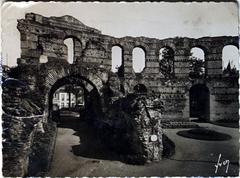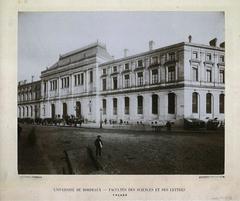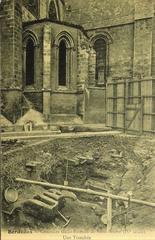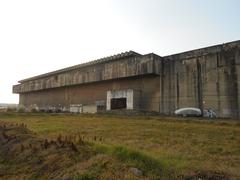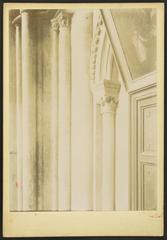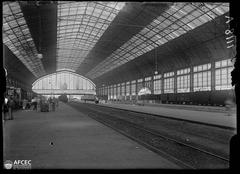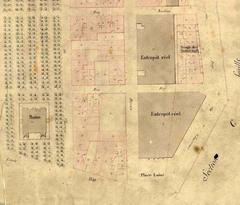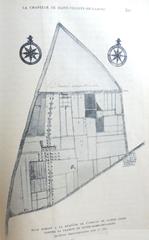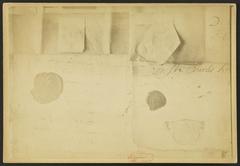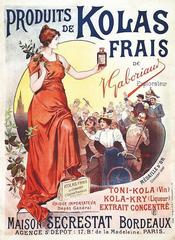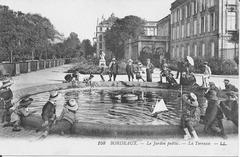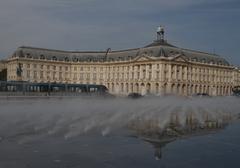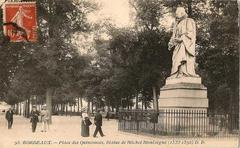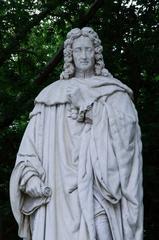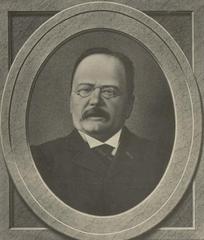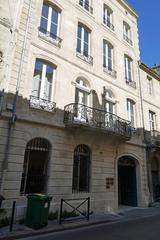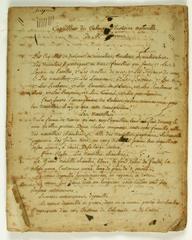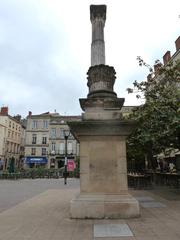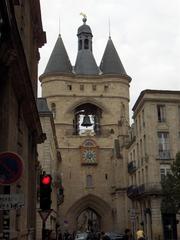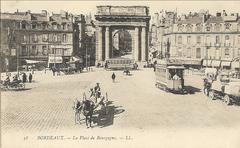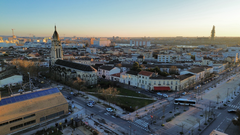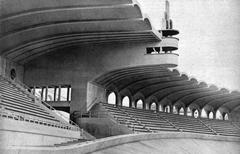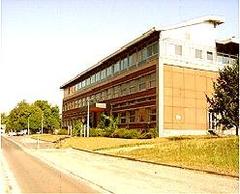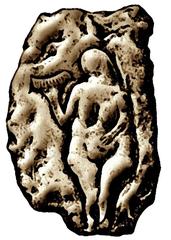
Visiting the Prefecture Building of Gironde (Palais Rohan) in Bordeaux, France: Tickets, Hours, and Tips
Date: 04/07/2025
Introduction
Nestled in the heart of Bordeaux, the Prefecture Building of Gironde—also known as Palais Rohan—is a cornerstone of the city’s historical, architectural, and administrative heritage. This neoclassical masterpiece serves both as the seat of the departmental government and as an emblem of Bordeaux’s evolution from a medieval trading port to a vibrant modern city. Its origins trace to the 18th century, first as the Archbishop’s residence, before becoming the prefecture and city hall, mirroring Bordeaux’s journey from ecclesiastical power to republican governance (Bordeaux Tourism; lemap-bordeaux.com).
Located within Bordeaux’s UNESCO-listed historic center, the Prefecture Building boasts a neoclassical façade, grand columns, and ornate detailing—hallmarks of Enlightenment architecture. Its proximity to iconic landmarks such as Cathédrale Saint-André, Place Pey-Berland, and Place de la Bourse situates it at the city’s cultural and civic core (nomadicmatt.com; guide-bordeaux-gironde.com).
While the Prefecture operates as an active government office—limiting regular interior access—its exterior can be admired year-round. Special events, like the European Heritage Days, occasionally open its doors for guided tours, providing deeper insights into its architecture and history (gironde-tourisme.com; fr.wikipedia). This guide covers everything you need to know for an enriching visit, from hours and ticketing to accessibility, travel tips, and nearby attractions.
Bordeaux’s Historical Foundations and Administrative Evolution
Medieval and Early Modern Foundations
Bordeaux’s story begins with the Celtic settlement of Burdigala around 300 BC, later becoming the Roman capital of Aquitaine by 60 BC. Its strategic Garonne River location made the city contested throughout history, enduring invasions and shifting rulers (lemap-bordeaux.com). By the 12th century, Bordeaux entered a golden era under English rule, booming as a wine-exporting port. In 1453, following the Battle of Castillon, Bordeaux was annexed to France, ushering in new governance and setting the stage for its future administrative significance.
The Rise as an Administrative Center
Bordeaux’s administrative importance surged during the Enlightenment, especially in the 18th century—a period marked by urban renewal and architectural splendor, including the construction of Place de la Bourse and the Grand Théâtre (lemap-bordeaux.com). The Prefecture was established after the French Revolution as the seat of the newly created department, anchoring regional governance and embodying the city’s evolving civic identity.
Architectural and Political Significance
Architectural Evolution and Urban Context
The Prefecture Building is a striking example of neoclassical architecture, featuring a symmetrical façade, imposing columns, and refined detailing. Its design echoes Enlightenment ideals and blends seamlessly with Bordeaux’s harmonious 18th-century cityscape (nomadicmatt.com). Located among other important civic structures like the Hôtel de Ville (City Hall) and the Palais Rohan, it reinforces Bordeaux’s role as a hub of governance and public life (guide-bordeaux-gironde.com).
Political and Strategic Role
The Prefecture’s importance extends beyond local administration. Bordeaux has served as a refuge for the French government during national crises—including the Franco-Prussian War, World War I, and World War II—when state functions moved to the city’s robust civic buildings, including the Prefecture (lemap-bordeaux.com). This underscores its role not only in regional governance but also as a symbol of national stability.
Visiting the Prefecture Building of Gironde: Hours, Tickets & Accessibility
Visiting Hours and Entry
- Exterior Access: The building’s neoclassical exterior can be admired at any time, year-round.
- Interior Access: Generally restricted; interior tours are occasionally available during events like European Heritage Days (September). Check the official Gironde prefecture website and Bordeaux tourist office for updates.
Tickets and Entry Fees
- Exterior Viewing: Free, no ticket required.
- Guided Tours/Special Events: Often free or available at a nominal cost. Advance booking is recommended when tours are offered.
Accessibility
- Building & Esplanade: Accessible to visitors with reduced mobility; the surrounding historic center is pedestrian-friendly.
- Interior Tours: Accessibility may vary—confirm in advance for special events.
Travel Tips
- Best Time: Spring and autumn for mild weather.
- Combine Visits: Pair your visit with nearby sites like Cathédrale Saint-André or Place Pey-Berland for a richer experience.
- Guided Tours: Enhance your visit by joining a walking tour of Bordeaux’s UNESCO-listed historic center.
Nearby Attractions
While at the Prefecture Building, explore these nearby highlights:
- Place de la Bourse: 18th-century neoclassical architectural gem, famous for the Miroir d’eau.
- Grand Théâtre de Bordeaux: Renowned classical opera house.
- Cathédrale Saint-André: Gothic cathedral with striking bell towers.
- Palais Rohan: Bordeaux’s City Hall, immediately adjacent.
FAQs: Visiting the Prefecture Building of Gironde
What are the visiting hours?
- The exterior is accessible year-round; interior access is limited to special events.
Is there an entrance fee?
- No fee for exterior viewing; special tours may require tickets.
Are guided tours available?
- Occasionally, during events like European Heritage Days. Check official sources.
Is the building wheelchair accessible?
- The exterior and esplanade are accessible; interior accessibility during events should be confirmed in advance.
Preservation and Urban Context
As part of Bordeaux’s UNESCO World Heritage Site, the Prefecture Building is maintained under strict heritage regulations, preserving its architectural integrity. Though primarily administrative in function, it remains a landmark for those exploring Bordeaux’s historic core.
The Palais Rohan: Bordeaux’s Iconic Civic Landmark
Historical and Architectural Significance
Commissioned in 1772 and designed by Joseph Etienne, Palais Rohan’s austere Louis XVI neoclassical façade and grand interiors reflect Bordeaux’s Enlightenment-era transformation. Originally the archbishop’s palace, it became the city hall in 1837 and continues to serve as the administrative heart of Bordeaux (Bordeaux Tourism).
Visiting Information
- Hours: Monday–Friday, 9:00 AM–4:00 PM; public access is limited, but guided tours are available during heritage events.
- Tickets: Free during public open days. For guided tours or exhibitions, check with the Bordeaux Tourist Office.
- Accessibility: Wheelchair accessible; ramps and elevators provided.
- Guided Tours: Book in advance, especially for European Heritage Days.
Nearby Attractions
- Cathédrale Saint-André: Next to Palais Rohan.
- Grand Théâtre: A short walk away.
- Place de la Bourse: Iconic waterfront square.
Practical Tips for Visiting
- Plan Ahead: For interior access, target special events like European Heritage Days (September).
- Photography: Allowed outside; ask during tours for interior photography.
- Language: Most tours in French; inquire about English options at the tourist office.
- Weather: Bordeaux’s climate is mild but rainy in autumn/winter—bring appropriate attire.
Essential Resources
- Bordeaux Métropole Convention and Visitors Bureau: Official website
- Gironde Prefecture: Official website
- Palais Rohan (Wikipedia): fr.wikipedia
Conclusion
The Prefecture Building of Gironde, set within the Palais Rohan, is a vital piece of Bordeaux’s civic and architectural legacy. While interior access is limited, its grand exterior and central location make it a must-see for travelers. Combine your visit with surrounding UNESCO-listed sites for a comprehensive Bordeaux experience. For up-to-date details on tours and events, use the Audiala app and consult official tourism resources.
References
- Bordeaux Tourism
- lemap-bordeaux.com
- guide-bordeaux-gironde.com
- nomadicmatt.com
- gironde-tourisme.com
- fr.wikipedia
- en.wikipedia

